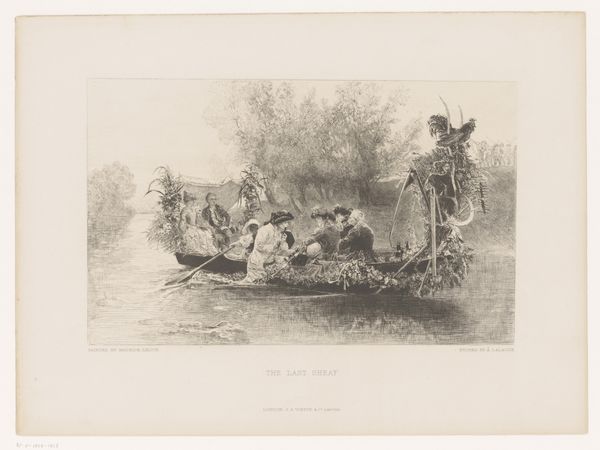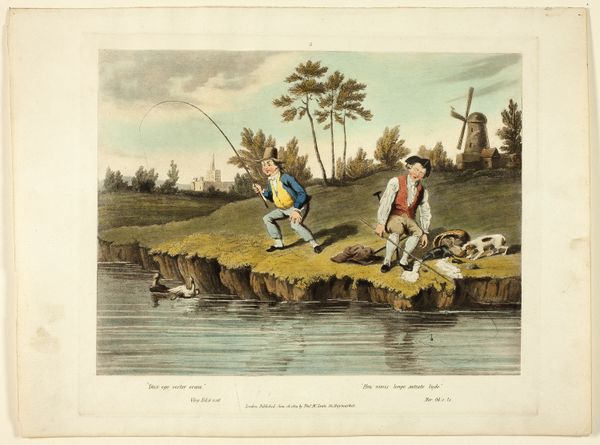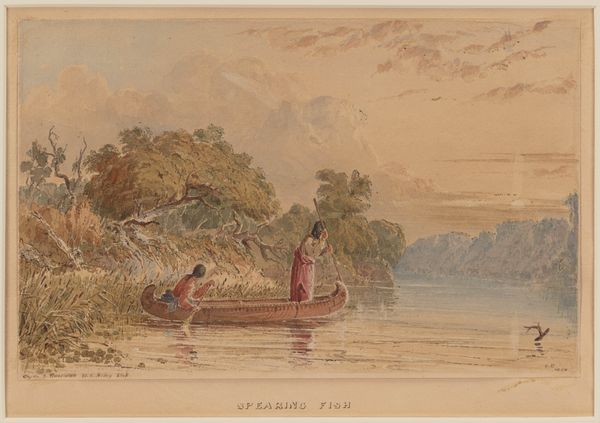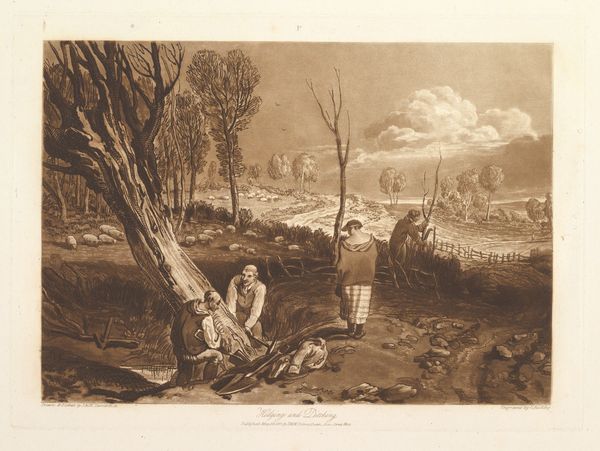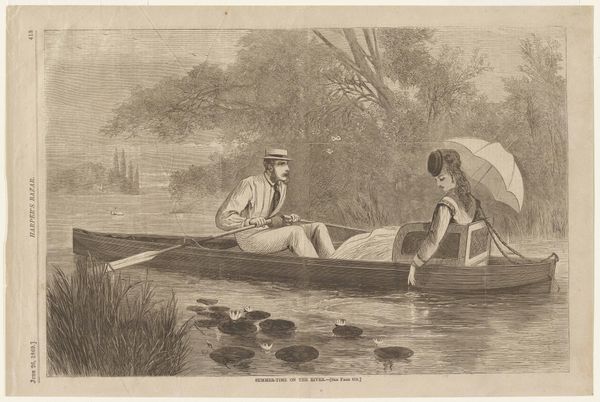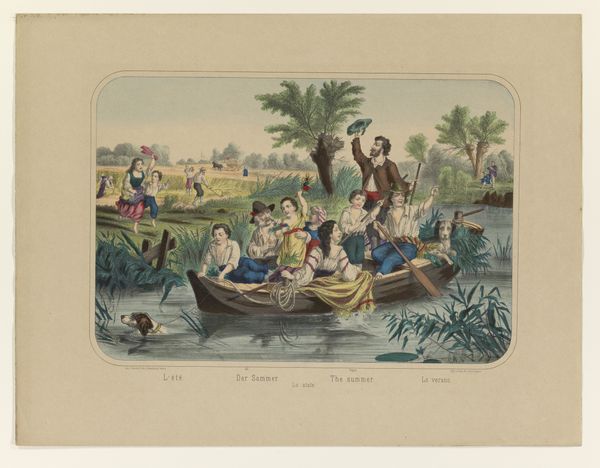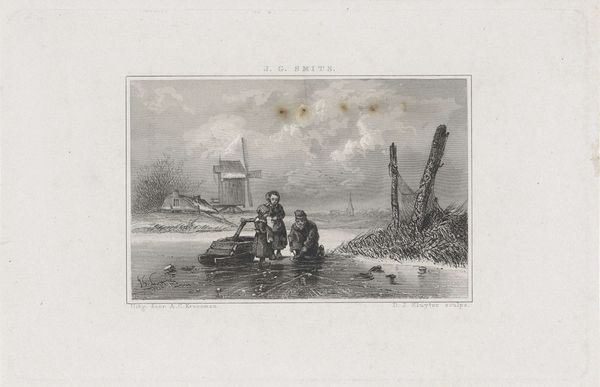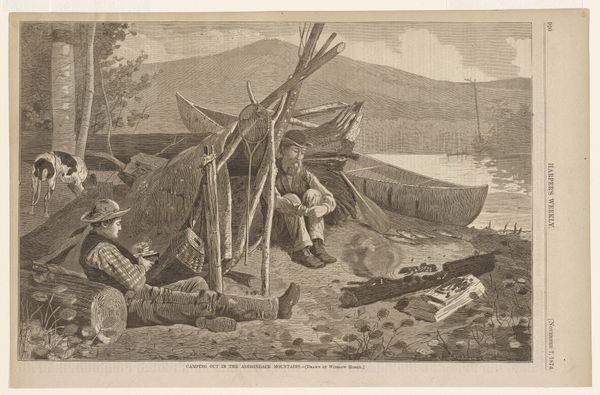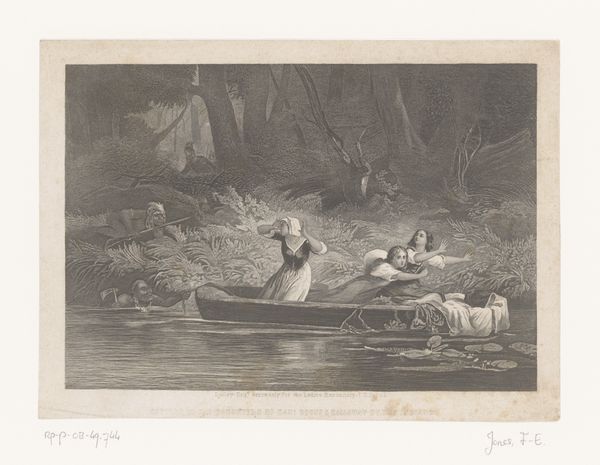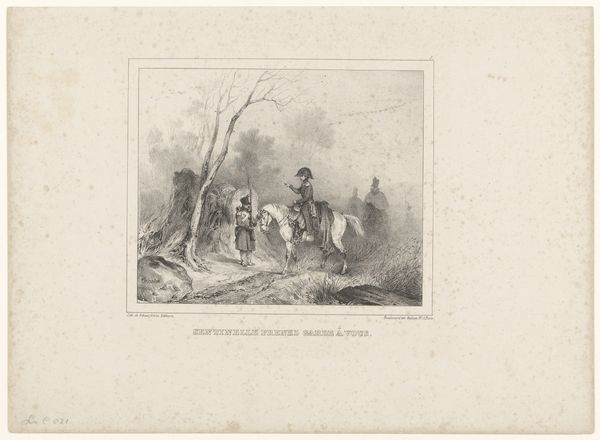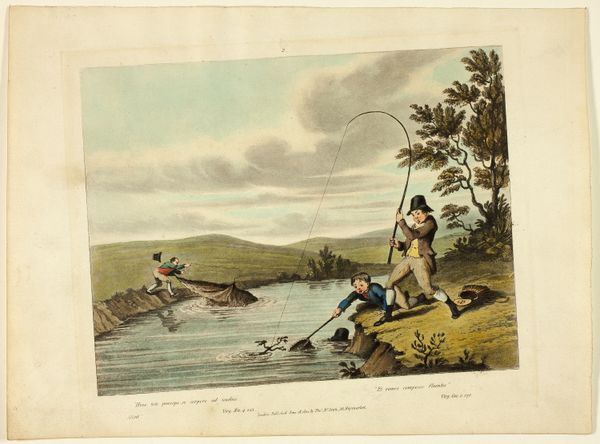
drawing, paper, ink
#
drawing
#
landscape
#
paper
#
ink
#
watercolor
Dimensions: 6 1/4 × 8 3/4 in. (15.9 × 22.2 cm) (image)9 11/16 × 12 3/4 in. (24.6 × 32.4 cm) (sheet)17 9/16 × 21 1/2 × 1 1/8 in. (44.6 × 54.6 × 2.9 cm) (outer frame)
Copyright: Public Domain
Seth Eastman created this watercolor titled "Gathering Wild Rice," and it offers us a glimpse into a scene of indigenous life. The composition, dominated by vertical reeds, contrasts with the horizontal canoes and figures, creating a structured yet organic feel. Eastman employs a limited palette, emphasizing earth tones and muted blues. This reinforces the sense of naturalism and perhaps a romanticized view of indigenous peoples in harmony with their environment. The use of watercolor allows for a certain transparency and fluidity, softening the edges and blending the forms. This is a crucial structural element, inviting a contemplation on cultural representation. Through composition and materiality, Eastman invites viewers to consider the broader narratives of cultural encounter and representation embedded within this seemingly simple scene.
Comments
minneapolisinstituteofart almost 2 years ago
⋮
This is the first known picture by a non-Native artist of people harvesting Minnesota’s proudest hotdish ingredient. The birchbark canoe indicates these women are probably Anishinaabe (Ojibwe); Dakota people typically carved canoes from tree trunks. One woman steadies the canoe while the others bend stalks over the gunwale and gently release the seeds with paddles. The wild grain is then gathered, dried, and hulled. Ohiyesa (also called Charles Eastman), a grandson of Seth Eastman and the Dakota woman Wakaninajinwin, described the next step: “The women then pour it upon a robe and begin to shake it so that the chaff will be separated by the wind.” This watercolor, one of 35 works on paper by Eastman in Mia’s collection, was the basis for an illustration in Henry Rowe Schoolcraft’s massive "Historical and Statistical Information Respecting the History, Condition, and Prospects of the Indian Tribes of the United States" (Philadelphia: Lippincott, Grambo & Co., 1851-57).
Join the conversation
Join millions of artists and users on Artera today and experience the ultimate creative platform.
